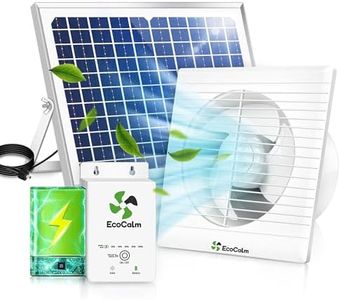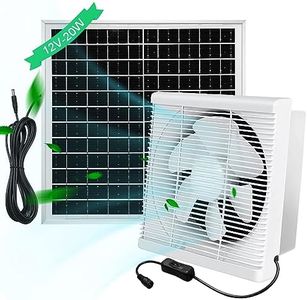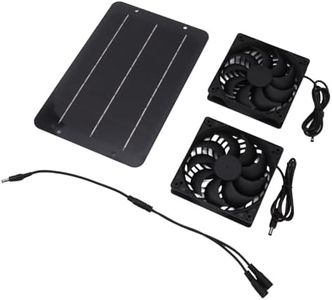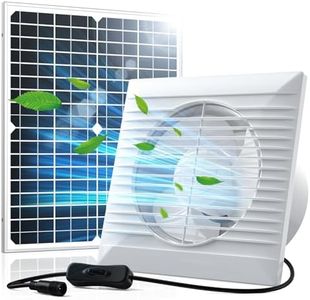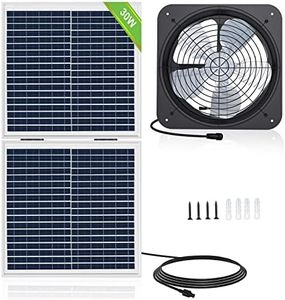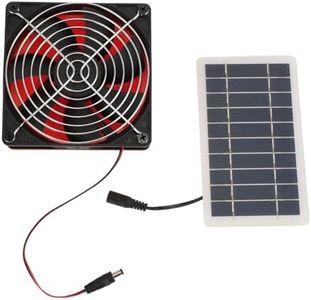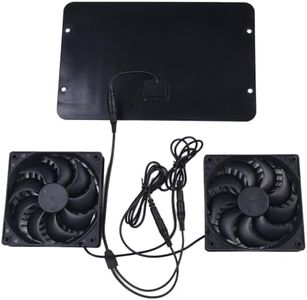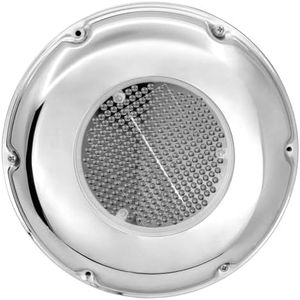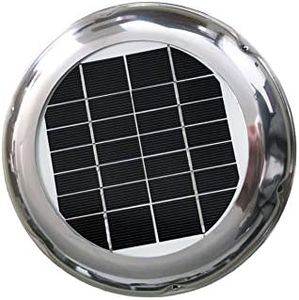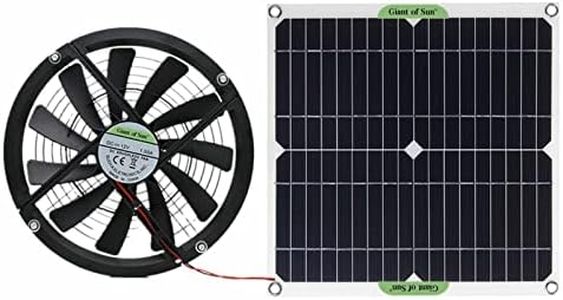We Use CookiesWe use cookies to enhance the security, performance,
functionality and for analytical and promotional activities. By continuing to browse this site you
are agreeing to our privacy policy
10 Best Solar Powered Fans
From leading brands and best sellers available on the web.Buying Guide for the Best Solar Powered Fans
Choosing a solar-powered fan is a great step towards energy efficiency and eco-friendliness. To pick the right one for your needs, you should understand how these fans work, as well as the important features that will determine their effectiveness in your specific setting. Think about where you will use it, how much airflow you need, and how often you expect the fan to run. The ideal fan should balance performance, usability, and durability for your lifestyle.Solar Panel WattageSolar panel wattage refers to the maximum power the solar panel can generate under ideal sunlight conditions. This is important because it determines how much electricity is available for the fan to run. Lower wattage panels (typically under 10 watts) are good for small personal fans, while higher wattage panels (20–50 watts or more) are better for larger or more powerful fans. Choose a wattage based on how powerful you want the fan to be and how much sunlight your location gets. If you need a fan for a larger area or stronger airflow, look for higher wattage.
Fan Size and AirflowFan size generally refers to the diameter of the blades and impacts how much air the fan can move. Airflow is often measured in CFM (Cubic Feet per Minute). Larger fans or those with higher CFM can circulate more air, which is useful for ventilating bigger rooms or spaces like attics, greenhouses, or garages. Smaller fans are suitable for personal use in close quarters. Consider your space: use a small fan for a desk or tent, and a larger one for rooms or outdoor sheds.
Battery BackupBattery backup means the fan can store energy and run even when the sun isn’t shining. This is important if you want the fan to work on cloudy days or during the night. Some models include built-in batteries, and others allow you to add your own. Capacity is measured in mAh or amp-hours; higher capacities provide longer run times. Choose a fan with backup if you need continuous airflow or if sunlight in your area is unpredictable.
Portability and Mounting OptionsPortability refers to how easy it is to move the fan from place to place, while mounting options tell you how and where the fan can be installed (like desk, wall, or roof mounting). If you want a fan for camping or travel, look for a compact and lightweight design. For permanent installation in an attic or greenhouse, make sure the fan can be securely mounted where you need it and that the solar panel can be positioned for maximum sun exposure.
Build Quality and Weather ResistanceBuild quality and weather resistance are about how well the fan and its solar components can withstand the elements. Durable materials (like rust-proof metals or UV-resistant plastics) and weatherproofing (for both fan and solar panel) matter most if you plan to use the fan outdoors or in humid/hot locations. Pick a robust, weather-resistant design if your fan will be exposed to rain, wind, or extreme sun, but a basic build will be fine for occasional indoor use.
Speed Settings and ControlsSpeed settings and controls let you adjust the airflow according to your needs. Some solar fans offer multiple speed options, while others have simple on/off switches. If you want to vary the breeze or reduce noise, a model with several speed choices will give you more flexibility. Simple controls may be fine for occasional use, but more adjustability is helpful if you’ll use the fan often and in different situations.
